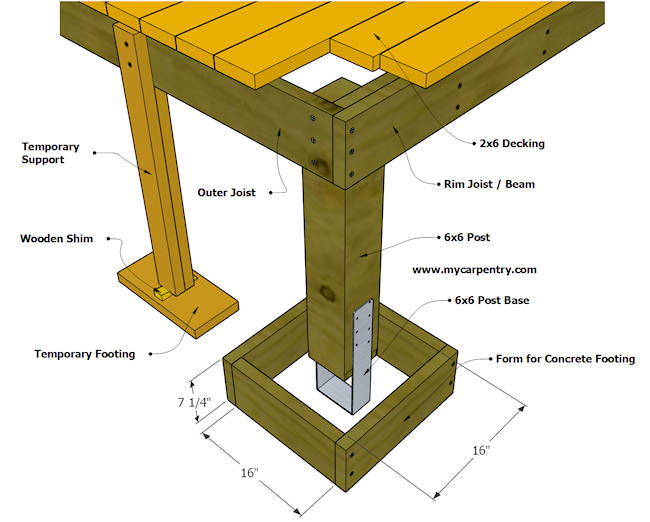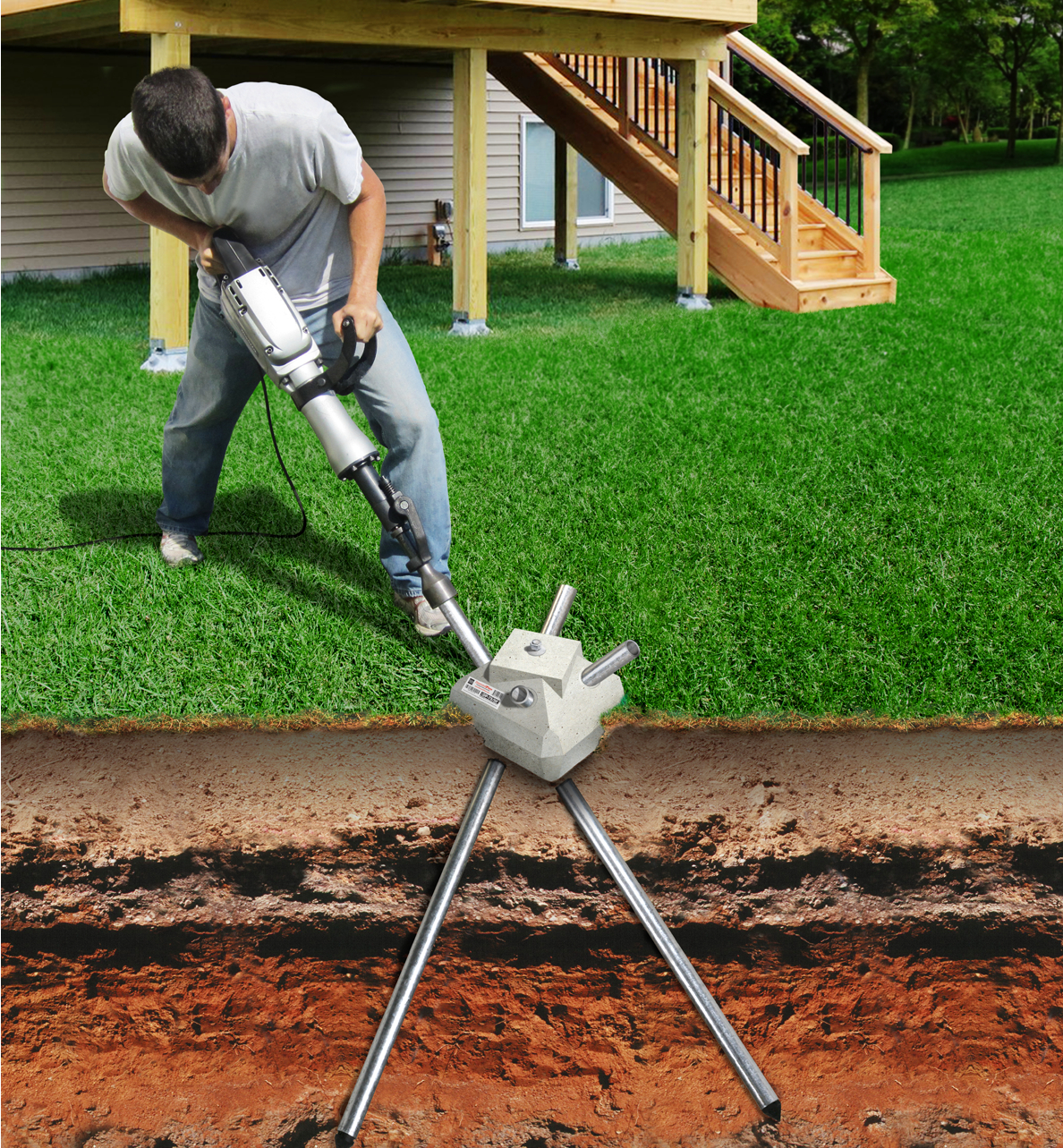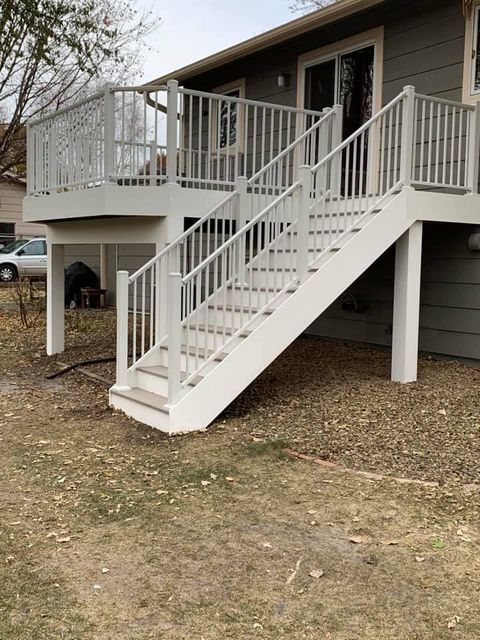Deck Footings 101: Browsing the Basics for a Stable and Resilient Deck
Specialist Tips for Setting Up Deck Footings to Assistance Your Outdoor Room
When it comes to developing a deck, one of the most important elements to consider is the setup of proper grounds. These footings are the structure upon which your outdoor area will rest, supplying security and support for years to come. What specifically does it take to mount deck grounds properly?
Relevance of Correct Deck Footings
Appropriate deck grounds are important for ensuring the stability and long life of your exterior area. Without strong and effectively set up footings, your deck may become unsteady, leading to security hazards and costly fixings.

Along with security, appropriate deck footings likewise add to the long life of your exterior space (Deck Footings). Grounds that are designed and constructed to withstand the components and dirt conditions in your area will certainly help protect against the deck from moving or settling gradually. By guaranteeing the grounds are properly sized and installed, you can minimize the danger of damages to the deck structure, expanding its lifespan and reducing the demand for pricey repairs or substitutes

Picking the Right Type of Grounds
When choosing the proper sort of footings for your deck, it is very important to think about factors such as soil problems, neighborhood building regulations, and the overall style of your outside space. The sort of footing you pick will play a vital function in ensuring the security and long life of your deck.
One typical type of ground is the concrete footing. Concrete grounds are ideal for many soil problems and give excellent support for decks.
In many cases, you may need to utilize customized grounds, such as pile grounds or deep structures, if you are developing a multi-level or large deck. These grounds are developed to disperse the weight of the deck over a larger location, ensuring stability and avoiding sinking or resolving.
Prior to picking a kind of footing, it is crucial to consult neighborhood building regulations and guidelines to make sure conformity. In addition, take into consideration the style and intended use your exterior space. Factors such as the dimension, shape, and load-bearing requirements of your deck will certainly affect the type of footing that is most suitable.
Preparing the Ground for Footing Installment
To appropriately prepare the ground for footing installation, it is important to assess the dirt conditions and take essential actions to guarantee stability and durability of the deck. The very first step is to dig deep into the area where the footings will certainly be installed. The deepness of the excavation will certainly rely on the frost line in your area and the specific demands of the deck design. It is vital to eliminate any plant life, rocks, or debris from the excavation to ensure a solid structure.
When the area has actually been excavated, the next action is to small the soil. This can be done utilizing a plate compactor or by utilizing a hand meddle. Condensing the dirt assists to eliminate any type of spaces or air pockets, which can result in resolving and instability gradually.
After condensing the dirt, it is essential to lay a layer of gravel or crushed rock at the end of the excavation. This will certainly provide drain and aid to stop water from pooling around the grounds, which can cause disintegration and instability.
Step-by-Step Guide to Putting Up Deck Footings
After effectively preparing the ground for footing setup, the following step is to begin the process of setting up deck footings. This step-by-step guide will supply you with a clear understanding of just how to mount deck grounds for your outside space.
Figure out the area: Beginning by noting the positions i thought about this of the deck grounds using risks and string. Ensure that the areas align with the design and design of your deck.
Dig the holes: Utilize an article opening miner or an auger to dig the openings for the footings. The deepness and size of the openings need to be in conformity with regional structure codes and the specific requirements of your deck layout.
Degree the openings: Utilize a level to make certain that the openings are dug to the appropriate depth and are degree with each other. (Deck Footings)
Add crushed rock: Area a layer of crushed rock at the end of each hole to improve drainage and protect against the timber from deteriorating.
Place the grounds: Position the footings into the openings, making certain they are level and plumb. Utilize a level and a gauging tape to make sure accuracy.
Secure the footings: Pour concrete right into the holes around the grounds, loading them to the top. Utilize a message level to make certain the grounds remain degree as the concrete collections.
Enable time for curing: Allow the concrete remedy according to the manufacturer's instructions prior to waging the deck building.
Common Blunders to Stay Clear Of During Footing Installation
One important element to think about during the setup of deck grounds is avoiding usual mistakes that can jeopardize the stability and durability of your outdoor space. While deck grounds may feel like a simple and basic component of the building procedure, ignoring certain variables can lead to expensive repairs and prospective safety and security threats down the line.

Additionally, disregarding to mount proper water drainage procedures can trigger water to accumulate around the footings, causing rot, decay, and the ultimate weakening of the deck's foundation. Moreover, utilizing the incorrect sort of footing material or stopping working to appropriately safeguard the footings can jeopardize their architectural integrity.
To prevent these blunders, it is important to speak with an expert or adhere to industry guidelines to guarantee correct footing installment. By doing so, you can make certain the stability and durability of your outside area, supplying a enjoyable and risk-free atmosphere for years to find.
Verdict
To conclude, why not try this out mounting proper deck grounds is crucial for the stability and longevity of your outdoor area. By selecting the right type of footings and adequately preparing the my link ground, you can ensure a solid foundation for your deck. Following a detailed overview and staying clear of common blunders during footing setup will additionally boost the resilience and safety of your deck.
Correct deck footings are crucial for making certain the security and long life of your outdoor room. The grounds offer as a connection between the deck and the ground, allowing the weight of the deck and its occupants to be dispersed equally right into the dirt.One typical type of footing is the concrete ground. Place the footings: Place the grounds right into the holes, making certain they are degree and plumb. Protect the footings: Pour concrete right into the holes around the grounds, loading them to the top.